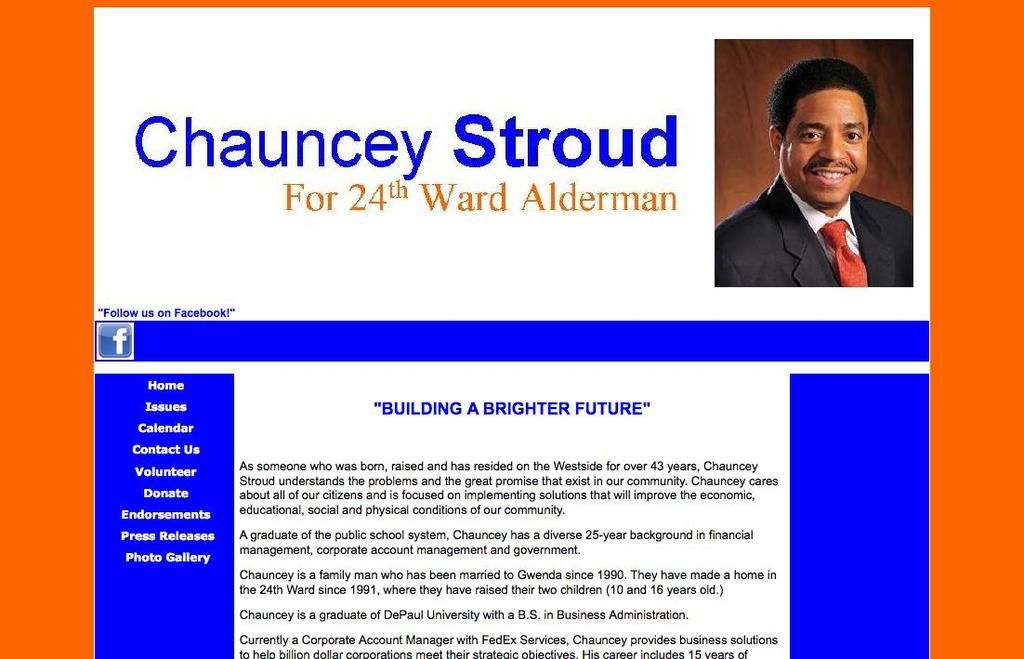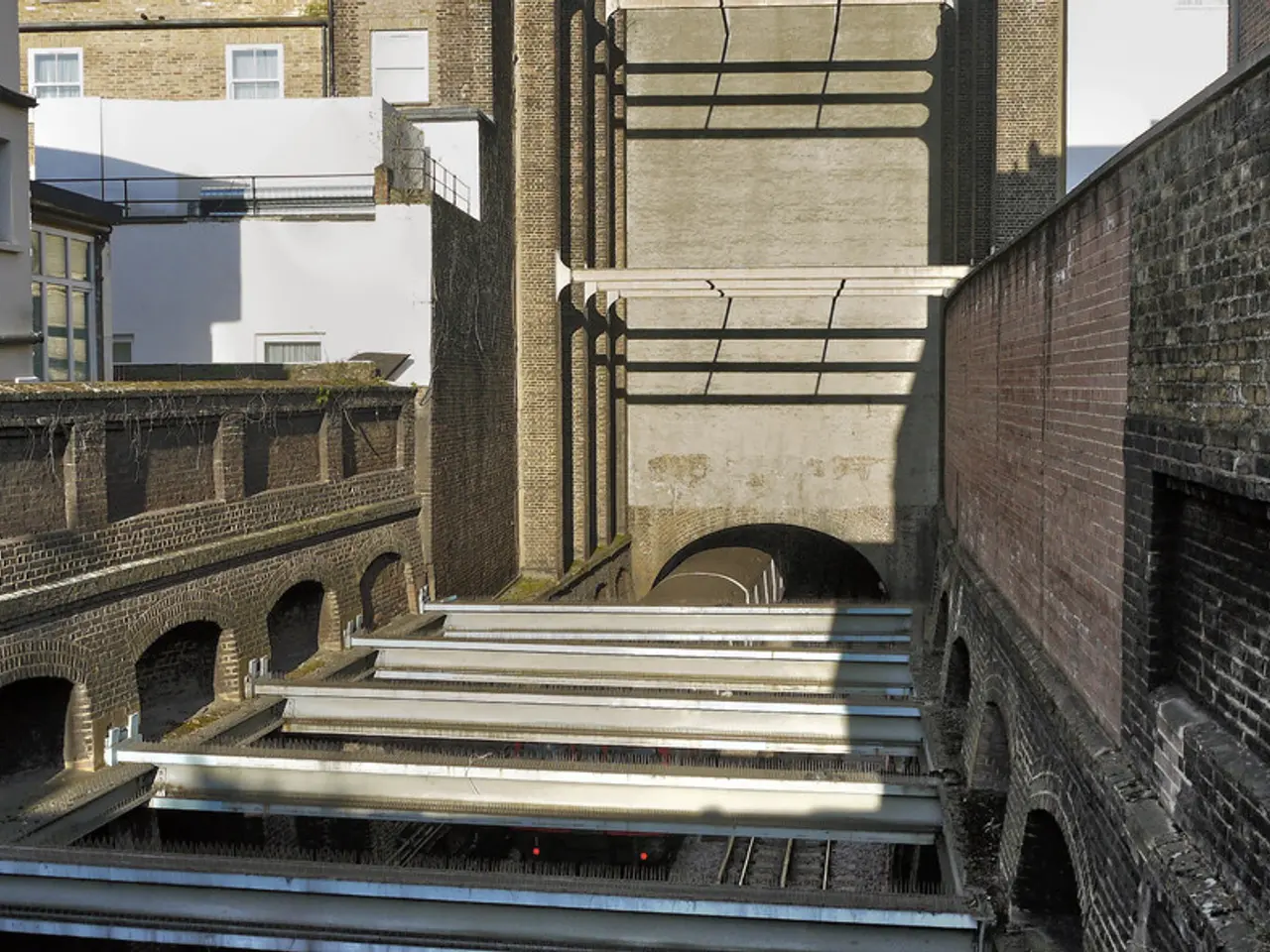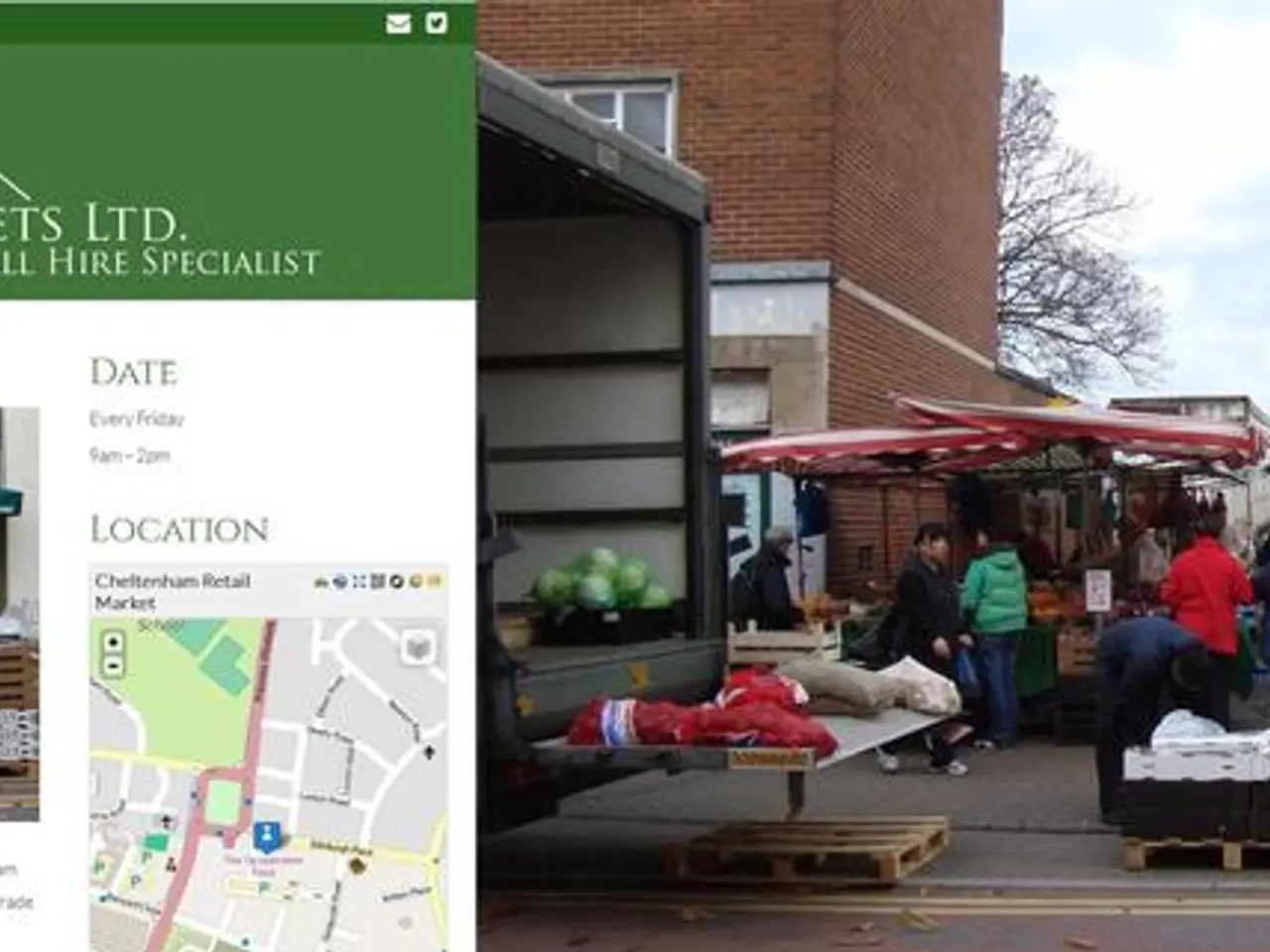Street Space Shift: The Vanishing Public Parking Spots in NRW
Street parking spots in NRW are mysteriously vanishing without explanation. - Removal of Roadside Parking Persists in NRW: A Closer Look at the Reasons Behind It
In an effort to boost the city atmosphere or bolster road safety, public parking spots on the streets are vanishing in several large cities across North Rhine-Westphalia. The freed-up spaces are commonly utilized to create bike paths, green areas, or zones for dining, as a survey by the German Press Agency among big cities in the federal state proves. In some instances, hundreds of spots are sacrificed for these projects. It's worth noting that no city surveyed disclosed comprehensive data about the evolution of local parking availability.
In the name of fairness, the ADAC automobile club insists that municipalities should compensate for the loss of spots. "You can't just strip car owners of hundreds of parking spots without offering an alternative," comments traffic specialist Roman Suthold from ADAC North Rhine.
Cologne: Roadblocks for Firefighters
The repurposing of parking spots is causing furors among car owners in Cologne. A complaint from the fire department indicated that some streets have grown too narrow, leading to delays for emergency vehicles due to parked cars. Approximately 450 spots have been removed - mere fraction of the 23,000 managed parking spots in the city center, as Cologne emphasizes.
In the future, the number of parking spots will reduce further, for example, to carve pathways for cargo bikes, charging stations for electric cars, car-sharing facilities, or to improve visibility of previously parked street corners. Nonetheless, road safety remains the top priority. In residents' parking areas, officials are gradually checking whether the streets are still wide enough for emergency vehicles and others despite lateral parking.
Münster: Bikes Take Precedence on Former Car Spots
Bike-friendly Münster is actively reducing parking spaces - for environmentally friendly alternatives to cars: So far, 150 former car spots have been transformed into bike rack spaces. An additional 300 current spots are planned for electric cars or car-sharing facilities. In other locations, roadside parkers have to move aside: A trial lane has been established there for buses and cyclists to share. Within the city center, 150 parking spaces have been removed from two parking lots - instead of cars, you'll find benches and workspaces under trees. The goal is to achieve climate neutrality, but also to enhance traffic safety.
Dortmund: Fewer Car Spots Inside the Ring Road
Dortmund has set itself the goal of increasing non-car trips to two-thirds by 2030. Consequently, it accepts the reduction of parking spots within public road space. In the next decade, around half of the approximately 2,000 parking spots in the city center will disappear gradually.
Innenstadtring, East Wall, has already been transformed into 215 parking spots for a new bike path. Over 200 additional spots are soon to be replaced for a bike street, through which the Ruhr cycling expressway will run. In the district of Westerfilde, an entire parking lot of 3,300 square meters will be redesigned into an attractive city square by 2027. According to city estimates, the comprehensive communication concept for the respective plans has led to a high level of acceptance of the already implemented conversions.
Bonn: Rhine Embankment Made Car-free
Bonn states that it is converting parking spots for quality of stay and climate adaptation. This is happening, for example, on the Rhine embankment promenade: To create new green areas, spaces for pedestrians, and a cycle street, traffic areas are being reduced. On the outskirts of Bonn's city center, the Stiftsplatz, which is currently used as a parking lot, will also be de-sealed. It will then transform into a park with 70 parking spaces and a road. In the districts, measures are being taken to prevent sidewalks from being blocked by parked cars, and areas are being created for shared vehicles, bike racks, and charging zones.
Duisburg: Disputes over Removed Parking Spots
Discussions are occurring in Duisburg regarding the removal of parking spots as part of larger urban development programs, a city spokesman admits. For example, 85 spots are about to be removed in Marxloh, which has been criticized on the renowned bridal fashion mile. A nearby parking garage is planned as compensation, and more than 600 citizen suggestions are currently being evaluated. Similar redevelopment plans are ongoing in other districts.
Bochum: Cautious Transformation
Bochum also cites several spots where parking has been reduced point-wise: Less than 50 spots have been removed so far. Spaces previously blocked by parked cars are now accessible to the public, a spokesman explains.
Düsseldorf: Redevelopment with Replacement Strategies
Düsseldorf doesn't offer any numbers regarding lost parking spots, but it does mention several projects where redevelopment has improved the city or expanded other mobility options. The city aims to create as many viable replacement options as possible when transforming parking spots. To alleviate parking pressure, it relies on neighborhood garages, for example: They are reserved for long-term parkers and residents who can use them for a monthly fee. The "after-work parking" concept is also quicker to implement: After store closing, residents can use the parking lots of large discount stores.
ADAC: Loss of Parking Spots Unavoidable, but be Careful
Short-term and long-term ideas are what ADAC mobility expert Suthold highlights. With regard to neighborhood garages, Suthold advises not building deep structures, but rather using so-called parking pallets, simple steel-structured parking buildings. "These can then also be easily demolished when, after the completion of the traffic turnaround, the need for parking spaces really decreases," he notes.
Despite the general trend of shrinking parking space, one should not remain stationary, emphasizes the mobility expert. On the contrary: "Stationary traffic is the key lever for the mobility transition." Key considerations include forward-looking planning and cautious citizen engagement: "This should not be done with a sledgehammer," he warns.Here's general information about the reasons and alternatives for changing parking spaces:
Reasons for Changing Public Street Parking Spaces
- Traffic Congestion: Marginalizing parking spaces encourages alternatives to driving, easing traffic.
- Sustainable Transportation: Cities push walking, cycling, or public transit to decrease personal vehicle use.
- Urban Renewal: Shrinking parking spaces paves the way for green spaces, pedestrian zones, or other urban development projects.
Alternatives for Car Owners
- Parking Garages and Lots: Many cities invest in parking garages and lots on the outskirts of urban areas, encouraging drivers to park and then opt for alternative transportation.
- Park-and-Ride Facilities: These stations allow drivers to park their cars and complete their journeys using public transit.
- Smart Parking Solutions: Apps like TransParking.eu help drivers locate available parking spots more efficiently, saving time spent searching.
- Promoting Electric Vehicles: Certain areas, such as Germany, promote electric cars with incentives including expanded charging infrastructure and tax benefits for electric cars.
- The ADAC automobile club advocates for municipalities to provide alternatives for car owners in exchange for lost public parking spots, as the removal of these spaces can cause inconvenience to drivers, as seen in Cologne where the fire department experiences delays due to parked cars on narrow streets.
- As cities in North Rhine-Westphalia continue to repurpose public parking spots for projects like bike paths, green areas, and zones for dining, some car owners may need to explore alternatives for parking. Possible options include utilizing parking garages and lots on the outskirts of urban areas, park-and-ride facilities, smart parking solutions, or taking advantage of expanded charging infrastructure for electric cars, which some areas may encourage through incentives like tax benefits.








